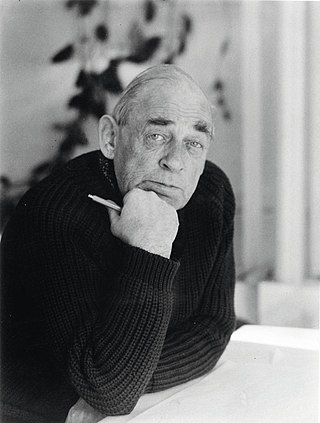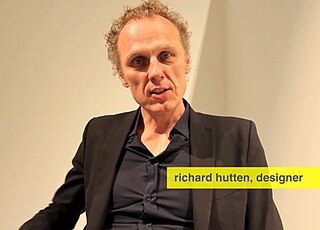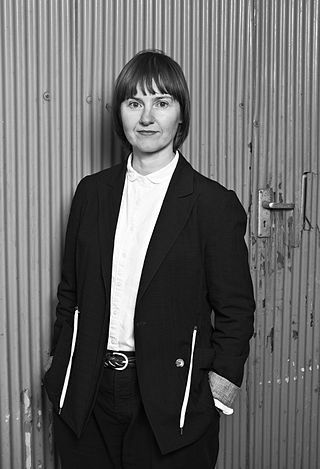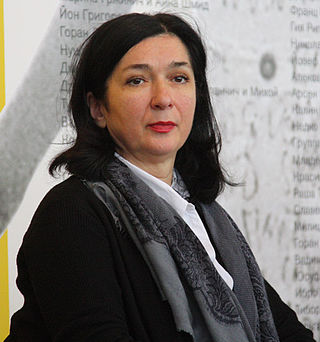
Hugo Alvar Henrik Aalto was a Finnish architect and designer. His work includes architecture, furniture, textiles and glassware, as well as sculptures and paintings. He never regarded himself as an artist, seeing painting and sculpture as "branches of the tree whose trunk is architecture." Aalto's early career ran in parallel with the rapid economic growth and industrialization of Finland during the first half of the 20th century. Many of his clients were industrialists, among them the Ahlström-Gullichsen family, who became his patrons. The span of his career, from the 1920s to the 1970s, is reflected in the styles of his work, ranging from Nordic Classicism of the early work, to a rational International Style Modernism during the 1930s to a more organic modernist style from the 1940s onwards.
The Bucharest Biennale is a contemporary art biennale held in Bucharest, Romania.

Richard G. J. Hutten is a Dutch industrial designer, art director, and artist who is active in furniture design, product design, interior design, and exhibition design.
Charles Esche is a museum director, curator and writer. His focus is on art and how it reflects, provokes and influences changes in society. He lives between Edinburgh and Eindhoven.

Vicky Richardson is a writer, curator and consultant specialising in architecture and design. In 2014 she was nominated for Debrett's 500, as one of the 20 most influential people in British architecture; in 2015 she was named a 'Woman of the Year', and received an Honorary Fellowship from the Royal Institute of British Architects.
Ahmet Öğüt is a conceptual artist living and working in Amsterdam, Netherlands and Berlin, Germany. He works with a broad range of media including video, photography, installation, drawing and printed media.
Christiane Paul is chief curator/director of the Sheila C. Johnson Design Center at Parsons School of Design and Professor of Media Studies at The New School, and Adjunct Curator of New Media Arts at the Whitney Museum of American Art in New York City. She is widely known as the author of the book Digital Art, part of the 'World of Art' series published by Thames & Hudson.

Zdenka Badovinac is a curator and writer, is the director of the Museum of Contemporary Art Zagreb, Croatia. She served between 1993 and 2021 as director of the Museum of Modern Art in Ljubljana, comprised since 2011 of two locations: the Museum of Modern Art and the Metelkova Museum of Contemporary Art in Metelkova, an autonomous art, culture, and social center in Ljubljana.
Jan Boelen is a curator of design, architecture and contemporary art. He studied Product Design at the Media & Design Academy in Genk, and he is the founder and former artistic director of Z33 – house for contemporary art in Hasselt, Belgium.
Frame Contemporary Art Finland is a foundation whose mission is to promote Finnish contemporary art internationally.
Yuko Hasegawa is the director of the 21st Century Museum of Contemporary Art, Kanazawa and professor of curatorial and art theory at Tokyo University of the Arts.
Ole Bouman is a Dutch German historian, writer, curator in urbanism design and architecture. Bouman is the founding director of Design Society, an initiative of China Merchants Group and the Victoria and Albert Museum in Shenzhen, which opened in December 2017.

The Model 60 stacking stool is a wooden stool designed by Finnish designer Alvar Aalto in 1933. Manufactured by Artek, the stool is one of Aalto's most famous furniture designs.

The Serbian pavilion houses Serbia's national representation during the Venice Biennale arts festivals.

The Polish pavilion houses Poland's national representation during the Venice Biennale arts festivals.

The Dutch pavilion houses the Netherlands's national representation during the Venice Biennale arts festivals.

The Israeli pavilion houses Israel's national representation during the Venice Biennale arts festivals.

The Finnish pavilion houses Finland's national representation during the Venice Biennale arts festivals.
Alban Muja is a Kosovan contemporary artist and film-maker. In 2019 he represented Kosovo at the 58th Venice Biennale. In his work he is mostly influenced by the social, political and economical transformation processes in wider surrounding region, he investigates history and socio-political themes and links them to his position in Kosovo today. His works cover a wide range of media including video installation, films, drawings, paintings, photographs and performance which have been exhibited extensively in various exhibitions and festivals.
Adrienne Edwards is a New York-based art curator, scholar, and writer. Edwards is currently the Engell Speyer Family Curator and Curator of Performance at the Whitney Museum of American Art.